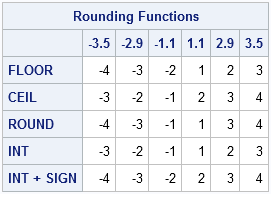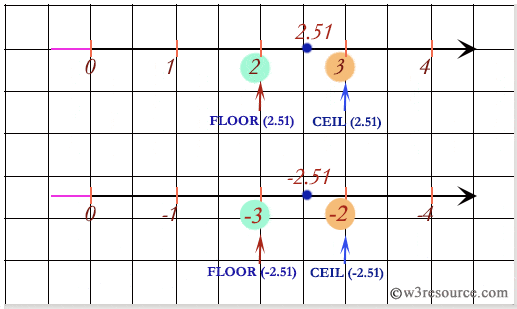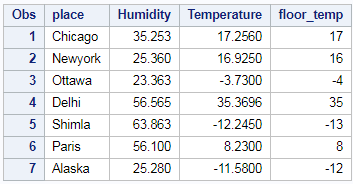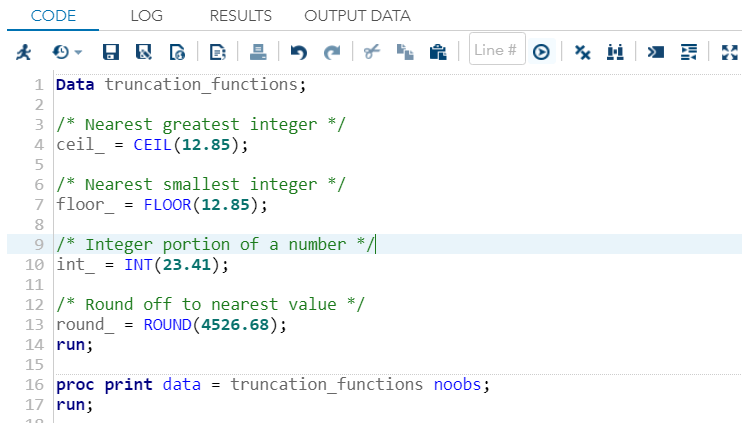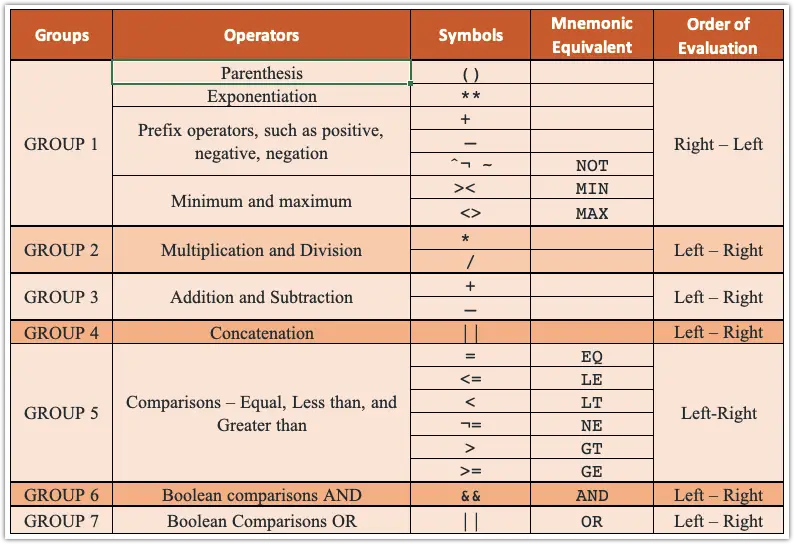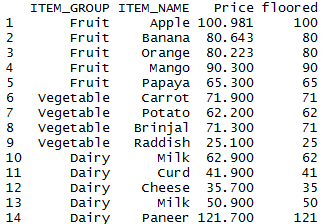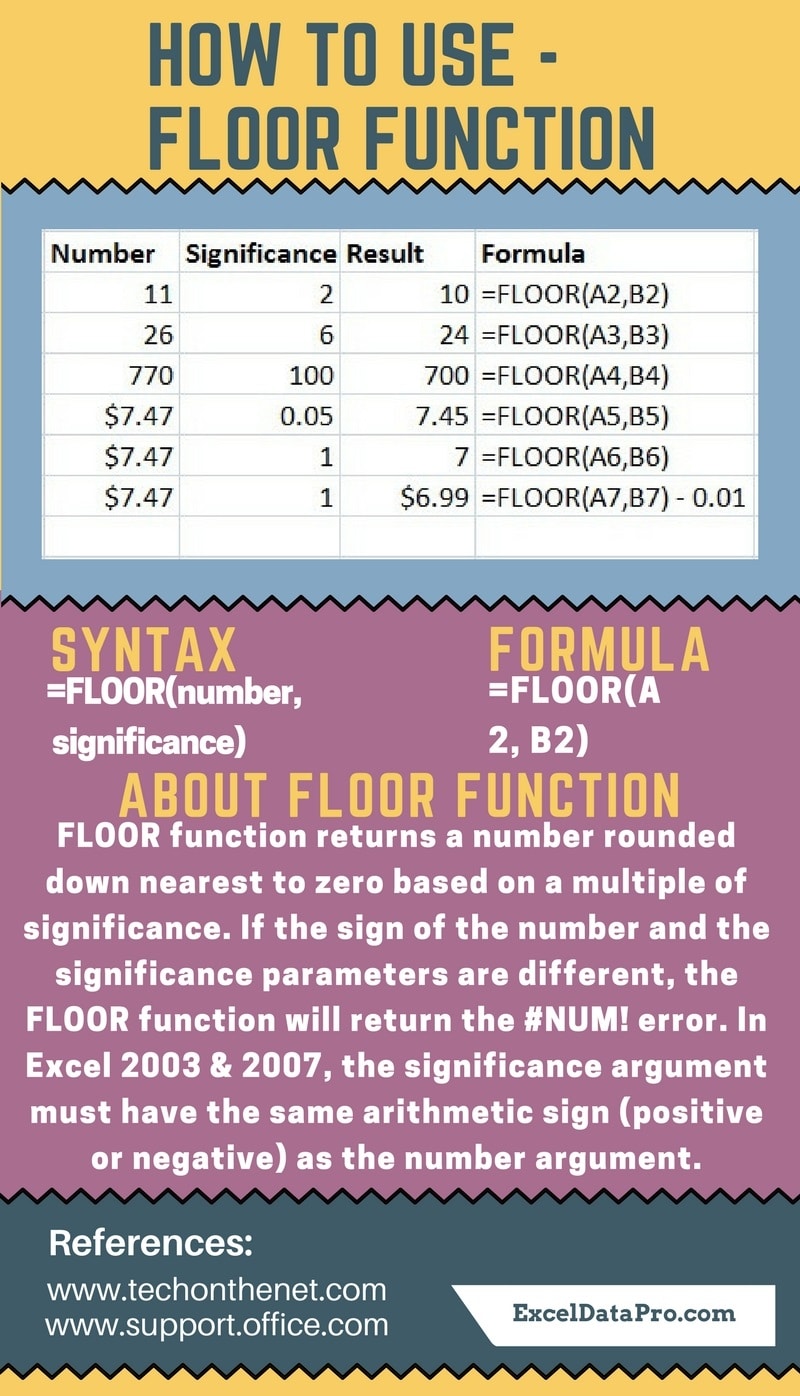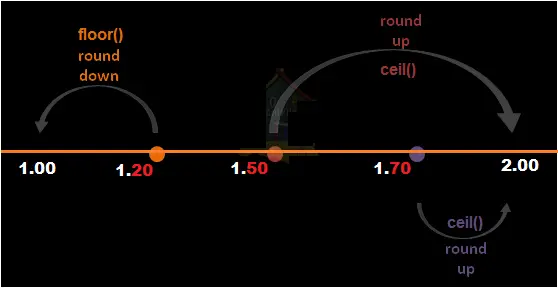Floor Integer Function Sas

If the value of argument is negative the int function has the same result as the ceil function.
Floor integer function sas. In mathematics and computer science the floor function is the function that takes as input a real number and gives as output the greatest integer less than or equal to denoted or similarly the ceiling function maps to the least integer greater than or equal to denoted or. The floorz function uses zero fuzzing. If the value of argument is positive the int function has the same result as the floor function. The int function returns the integer portion of the argument truncates the decimal portion.
The floor function fuzzes the results so that if the results are within 1e 12 of an integer the floor function returns that integer. If the value of argument is negative the int function has the same result as the ceil function. If the argument s value is within 1e 12 of an integer the function results in that integer. Round treats the rounding unit as a.
The int function rounds towards zero. The floorz function does not fuzz the result. Briefly i want to mention the sas floor and sas ceil functions. It will be easier to understand their role now that you understood the explanation above about sas round function.
If the argument s value is within 1e 12 of an integer the function results in that integer. The int function returns the integer portion of the argument truncates the decimal portion. When the rounding unit is the reciprocal of an integer the round function computes the result by dividing by the integer. The round function rounds to the nearest integer.
The floor function rounds down. The floor function returns the largest integer that is less or equal to the argument. Therefore with the floorz function you might get unexpected results. In the case below it will return 2.
Unlike the floorz function the floor function fuzzes the result. If the argument is within 1e 12 of an integer the floor function fuzzes the result to be equal to that integer. Utility of sas floor and sas ceil functions. The functions that perform rounding are the same in the data step as in the sas iml language.
If the value of argument is positive the int function has the same result as the floor. Therefore with the floorz function you might get unexpected results. If sas reads y with a different informat or if a program other than sas reads y then there is no guarantee that the characters 0 3 would produce a value of exactly 3 10. If the argument s value is within 1e 12 of an integer the function results in that integer.
If the value of argument is positive int argument has the same result as floor argument. If the argument s value is within 10 12 of an integer the function results in that integer.
